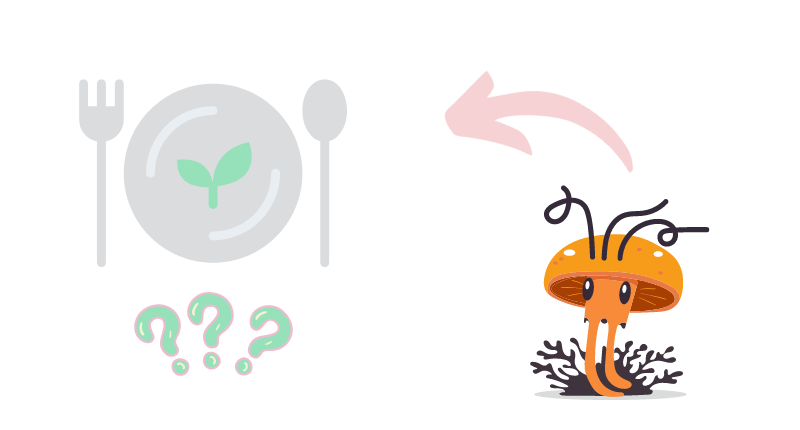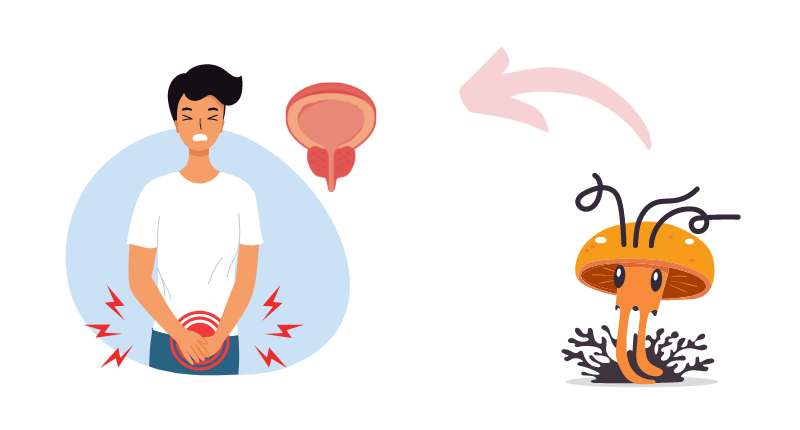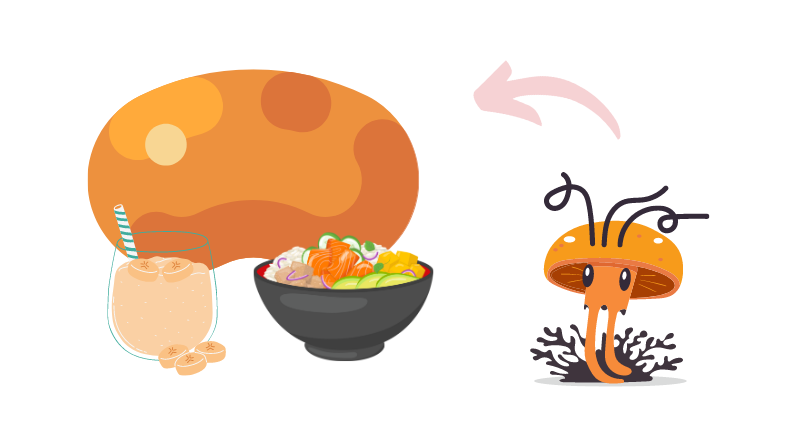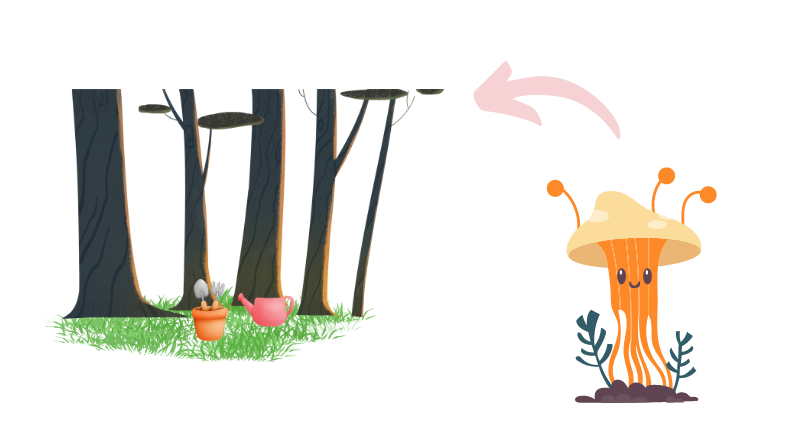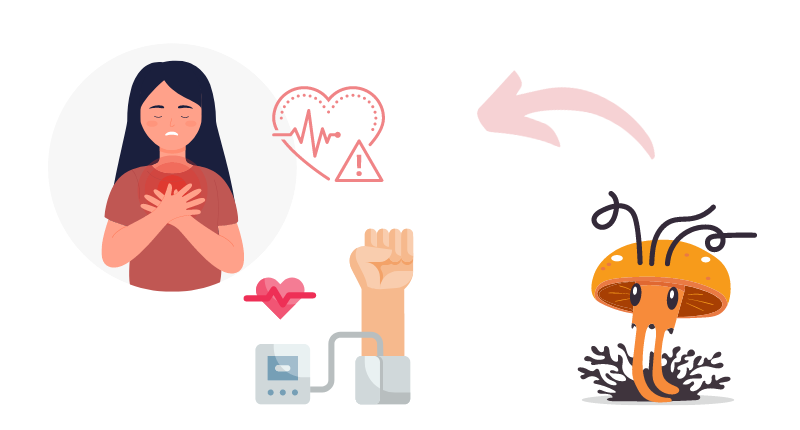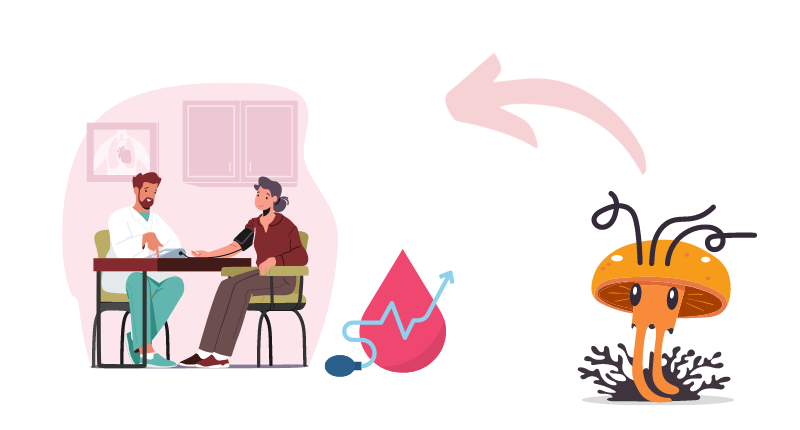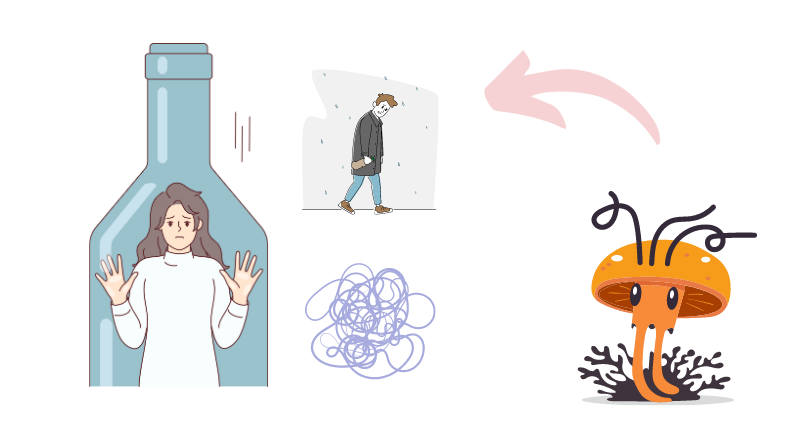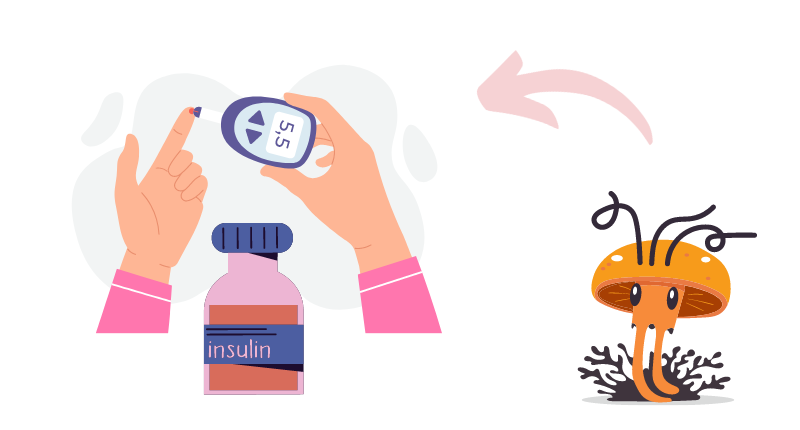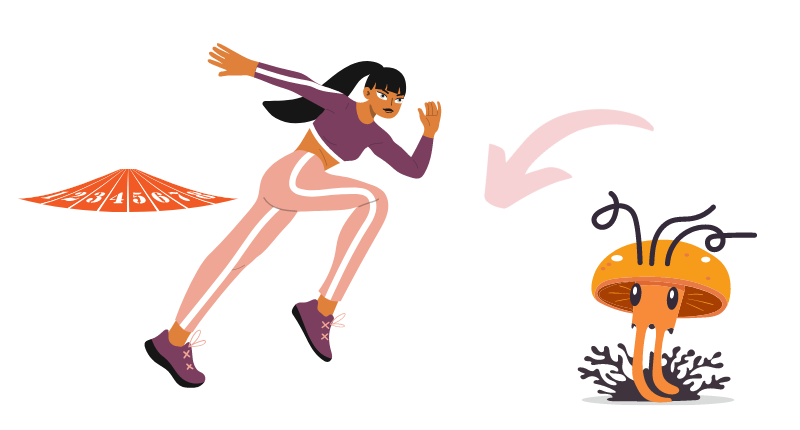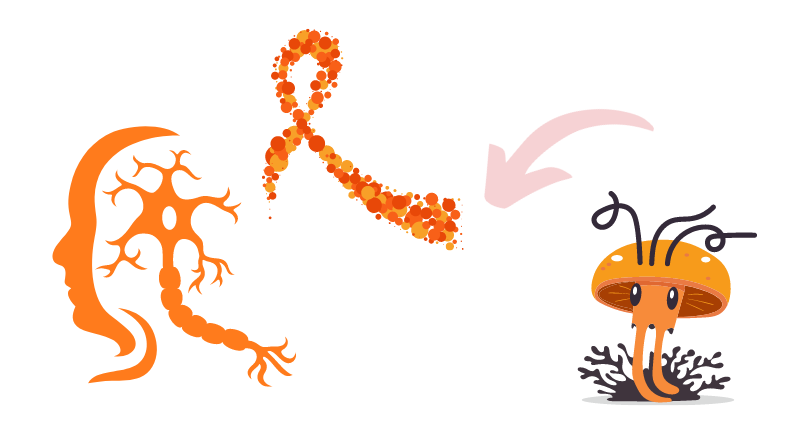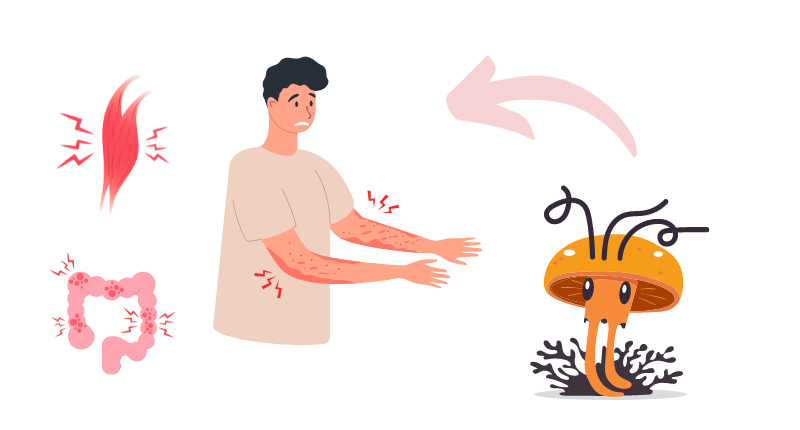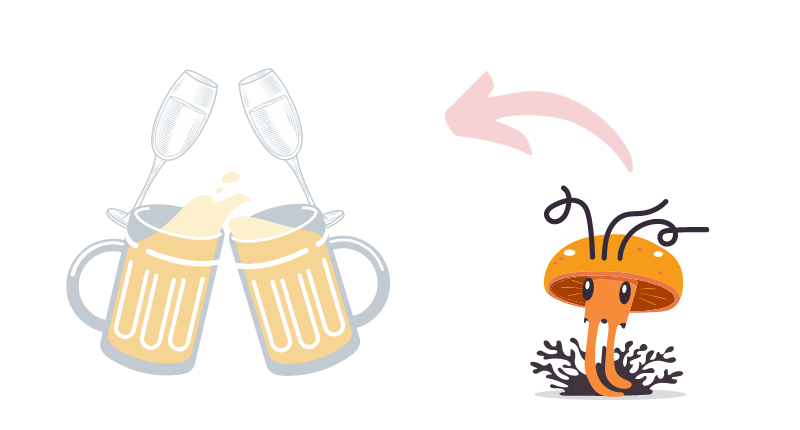In the world of medicinal fungi,
Cordyceps hold a unique place, attracting attention for their wide range of reported health benefits such as immune support, athletic performance enhancement, and potential anti-cancer properties
1[^6^]. This unconventional fungus, with a lifecycle intertwined with insects, has stirred a debate within the vegan community, leading us to the pivotal question:
Are Cordyceps vegan?
To answer this, we must scrutinize the cordyceps’ lifecycle, delve into their cultivation processes, and address the ethical considerations tied to veganism.
TABLE OF CONTENTS
-
- Understanding Cordyceps
-
- The Life Cycle of Cordyceps
-
- Cultivation Methods
-
- Cordyceps and Traditional Medicine
-
- Health Benefits of Cordyceps
-
- Are Cordyceps Vegan: Analyzing the Debate
-
- The Vegan Perspective
-
- Conclusion
UNDERSTANDING CORDYCEPS
Belonging to a genus of fungi that contains over 400 distinct species
2,
Cordyceps are well-known for their unique lifecycle and their role in traditional medicine across several cultures, especially in Asia.
While their health benefits have made them popular, it is their lifecycle that has sparked an ongoing debate about their suitability for a vegan diet. To shed light on this, let’s first understand the biological aspects of these fascinating fungi.
THE LIFE CYCLE OF CORDYCEPS
Cordyceps are classified as parasitic fungi, meaning they depend on a host for growth and reproduction[^3^]. Most cordyceps species rely on insects as hosts.
The lifecycle of cordyceps is as fascinating as it is macabre. Starting life as a tiny spore, the fungus finds an insect host, germinates, and breaches the insect’s exoskeleton. It then starts to proliferate inside the host, eventually consuming it from within. Once the insect host is fully consumed, the mature cordyceps emerges, releasing fresh spores into the environment to restart the cycle[^4^].
CULTIVATION METHODS
While the natural lifecycle of cordyceps raises ethical questions for vegans, it’s essential to note that many commercially available cordyceps are not directly harvested from insects. Modern cultivation methods now allow cordyceps, specifically the
Cordyceps sinensis species, to be grown in labs using vegan-friendly substrates like rice or soybeans[^5^].
Lab-grown cordyceps are comparable to their wild counterparts in terms of chemical composition and health benefits, yet avoid the ethical dilemmas related to wild harvesting[^6^]. Due to the high cost and ecological implications of wild harvesting, most cordyceps found in health stores and online are likely lab-grown.
CORDYCEPS AND TRADITIONAL MEDICINE
Cordyceps have long been used in traditional Chinese medicine (TCM) and other Eastern medicinal traditions. They are believed to have properties that support lung and kidney health, boost immunity, and enhance sexual vitality
1.
In TCM, cordyceps are considered a tonic, used to increase physical stamina and combat fatigue. They are also used in treatments for a wide range of conditions, including respiratory and heart diseases, liver disorders, renal dysfunction, and even cancer[^8^].
It’s interesting to note that while these traditional uses are backed by centuries of empirical knowledge, scientific research continues to explore and validate these claims.
HEALTH BENEFITS OF CORDYCEPS
Modern research has begun to validate many traditional beliefs about cordyceps, uncovering a range of potential health benefits. These fungi contain bioactive compounds such as cordycepin and polysaccharides, which have been shown to possess immune-boosting, anti-inflammatory, and antioxidant properties[^9^].
Studies suggest that cordyceps may aid in boosting exercise performance by enhancing the body’s use of oxygen during workouts[^10^]. Additionally, evidence indicates potential anti-tumor effects and beneficial impacts on heart health[^11^].
However, despite these promising findings, more research is needed to establish the full range of benefits and potential risks associated with cordyceps consumption.
ARE CORDYCEPS VEGAN: ANALYZING THE DEBATE
Veganism, at its core, rejects the exploitation and harm of animals for food, clothing, or any other purpose. Given this, can a product resulting from a process involving the death of insects be deemed vegan?
By a strict interpretation, wild-harvested cordyceps that involve the death of insects are not vegan. However, veganism encompasses a broad spectrum, and personal interpretation significantly impacts its practice[^7^]. Some vegans might perceive the lifecycle of cordyceps as a natural process and feel comfortable consuming them, while others might not.
In contrast, lab-grown cordyceps, which do not involve the use of insects, can generally be considered vegan-friendly.
THE VEGAN PERSPECTIVE
Some vegans might argue that cordyceps’ natural lifecycle does not align with their ethical beliefs, seeing the intentional cultivation and harvesting of wild cordyceps as exploiting insects.
However, other vegans might view the cordyceps’ natural lifecycle as part of the balance of nature, similar to lions preying on gazelles or spiders consuming flies. They might not see it as fundamentally different from consuming plants, which also compete for resources and may harm other organisms in their quest for survival.
Veganism is not a one-size-fits-all philosophy, and each individual can interpret and apply its principles differently.
CONCLUSION
In conclusion, the answer to “Are Cordyceps Vegan?” is complex. It hinges on various factors, including cordyceps’ cultivation method, one’s interpretation of veganism, and personal comfort with the fungi’s lifecycle.
While wild cordyceps might not meet strict vegan standards, lab-grown cordyceps, which are now widely available, can generally be considered vegan-friendly.
As always, individuals are encouraged to research and make informed decisions that align with their beliefs and dietary preferences.
References:
-
- Zhu, J. S., Halpern, G. M., & Jones, K. (1998). The scientific rediscovery of an ancient Chinese herbal medicine: Cordyceps sinensis. Part I. Journal of Alternative & Complementary Medicine, 4(3), 289-303. ↩ ↩2
-
- Holliday, J., & Cleaver, M. (2008). Medicinal Value of the Caterpillar Fungi Species of the Genus Cordyceps (Fr.) Link (Ascomycetes). A Review. International Journal of Medicinal Mushrooms, 10(3). ↩ ↩2
-
- Sung, G.-H., Hywel-Jones, N. L., Sung, J.-M., Luangsa-Ard, J. J., Shrestha, B., & Spatafora, J. W. (2007). Phylogenetic classification of Cordyceps and the clavicipitaceous fungi. Studies in Mycology, 57, 5–59. ↩
-
- Sanjuan, R., & Thèves, C. (2020). Parasites and fungi. eLife, 9. ↩
-
- Evans, H. C., Elliot, S. L., & Hughes, D. P. (2011). Hidden diversity behind the zombie-ant fungus Ophiocordyceps unilateralis: Four new species described from carpenter ants in Minas Gerais, Brazil. PLoS ONE, 6(3), e17024. ↩
-
- Lo, H. C., Hsieh, C., Lin, F. Y., & Hsu, T. H. (2013). A Systematic Review of the Mysterious Caterpillar Fungus Ophiocordyceps sinensis in Dong-ChongXiaCao and Related Bioactive Ingredients. Journal of Traditional and Complementary Medicine, 3(1), 16–32. ↩
-
- Ying, J. Z., Mao, X. L., Ma, Q. M., Zong, Y. C., & Wen, H. A. (1987). Icons of medicinal fungi from China. Science Press, Beijing, China. ↩
-
- Tuli, H. S., Sharma, A. K., Sandhu, S. S., & Kashyap, D. (2014). Cordycepin: a bioactive metabolite with therapeutic potential. Life sciences, 109(2), 68-77. ↩
-
- Chen, S., Li, Z., Krochmal, R., Abrazado, M., Kim, W., & Cooper, C. B. (2010). Effect of Cs-4® (Cordyceps sinensis) on exercise performance in healthy older subjects: a double-blind, placebo-controlled trial. The Journal of Alternative and Complementary Medicine, 16(5), 585-590. ↩
-
- Liu, Y., Wang, J., Wang, W., Zhang, H., Zhang, X., & Han, C. (2015). The Chemical Constituents and Pharmacological Actions of Cordyceps sinensis. Evidence-Based Complementary and Alternative Medicine, 2015, 575063. ↩
- Greenebaum, J. (2012). Veganism, Identity and the Quest for Authenticity. Food, Culture & Society, 15(1), 129-144. ↩
